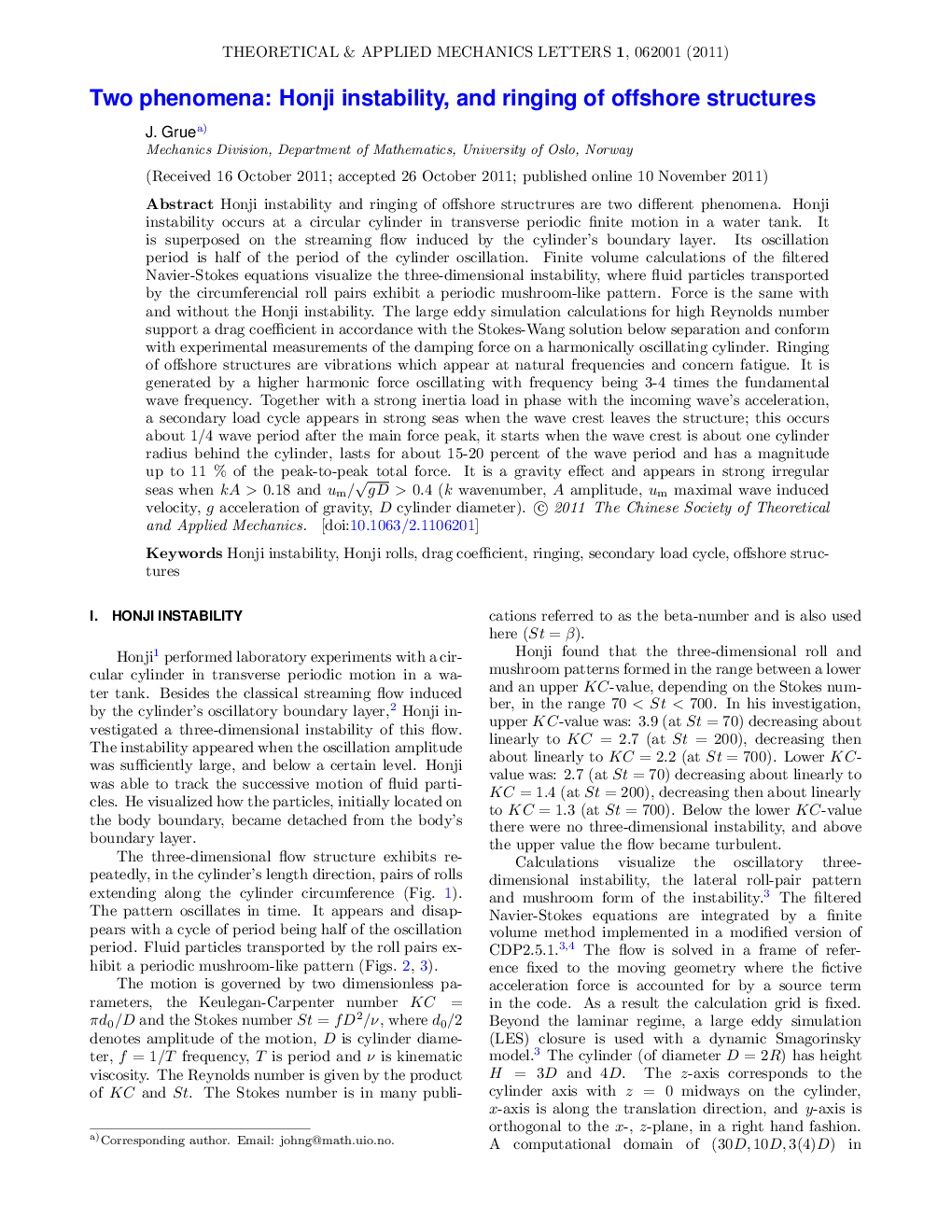| Article ID | Journal | Published Year | Pages | File Type |
|---|---|---|---|---|
| 808847 | Theoretical and Applied Mechanics Letters | 2011 | 59991 Pages |
Honji instability and ringing of offshore structrures are two different phenomena. Honji instability occurs at a circular cylinder in transverse periodic finite motion in a water tank. It is superposed on the streaming flow induced by the cylinder's boundary layer. Its oscillation period is half of the period of the cylinder oscillation. Finite volume calculations of the filtered Navier-Stokes equations visualize the three-dimensional instability, where fluid particles transported by the circumferencial roll pairs exhibit a periodic mushroom-like pattern. Force is the same with and without the Honji instability. The large eddy simulation calculations for high Reynolds number support a drag coefficient in accordance with the Stokes-Wang solution below separation and conform with experimental measurements of the damping force on a harmonically oscillating cylinder. Ringing of offshore structures are vibrations which appear at natural frequencies and concern fatigue. It is generated by a higher harmonic force oscillating with frequency being 3–4 times the fundamental wave frequency. Together with a strong inertia load in phase with the incoming wave's acceleration, a secondary load cycle appears in strong seas when the wave crest leaves the structure; this occurs about 1/4 wave period after the main force peak, it starts when the wave crest is about one cylinder radius behind the cylinder, lasts for about 15–20 percent of the wave period and has a magnitude up to 11 % of the peak-to-peak total force. It is a gravity effect and appears in strong irregular seas when kA > 0.18 and (k wavenumber, A amplitude, um maximal wave induced velocity, g acceleration of gravity, D cylinder diameter).
